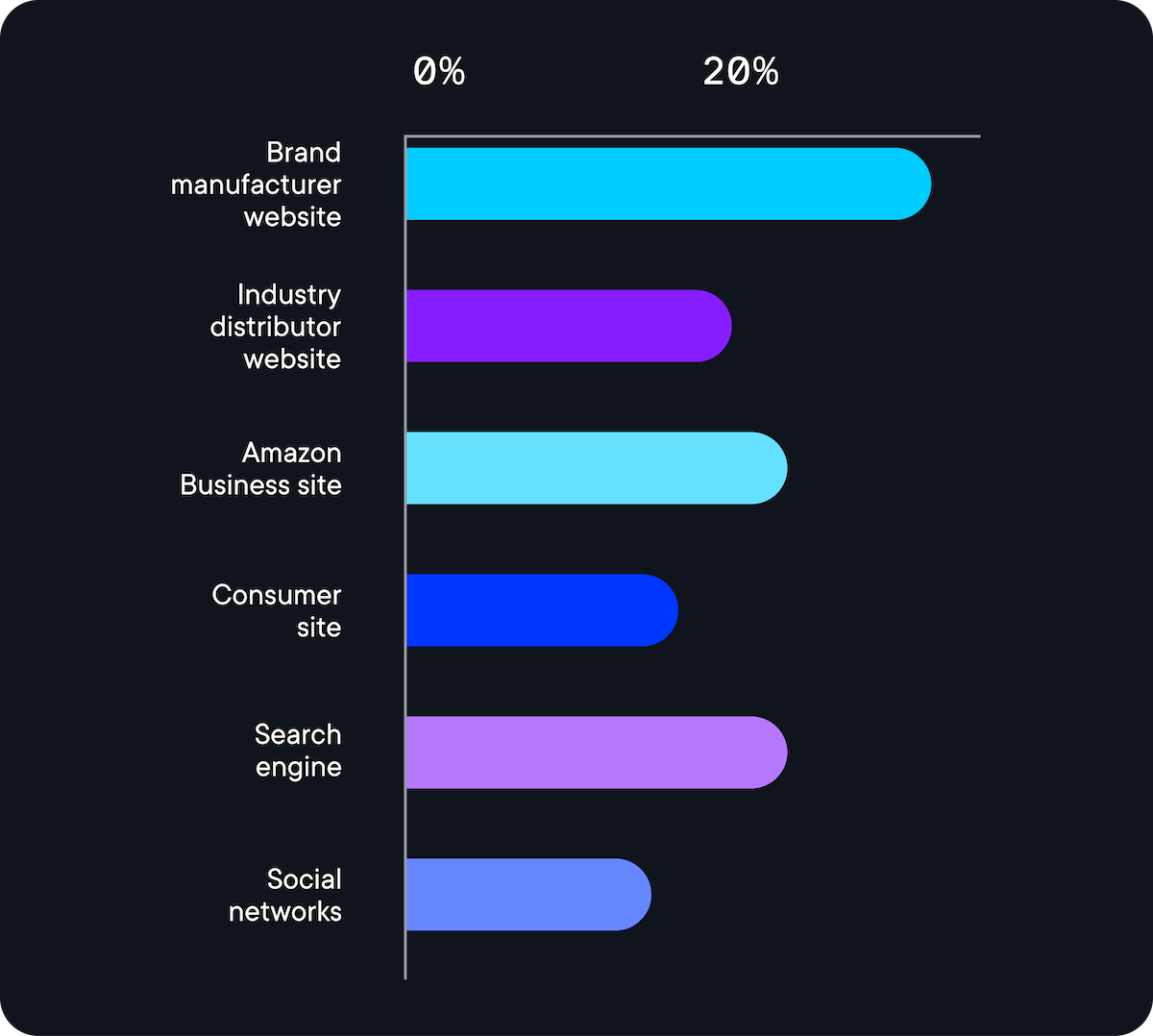How to resolve conflict in your buying channels to do more business
Providing great experiences across all channels helps maintain brand integrity, improve operational efficiency, and maximize revenue. So, which channels should you optimize? Where should you invest to create the best experiences and sales opportunities? This blog will explore these questions and more.


Understanding and resolving conflicts between B2B buying channels—whether online, over the phone, or through distributors—is crucial for staying competitive and profitable. Channel conflicts can lead to:
- Poor customer experiences: Inconsistent experiences can damage relationships and reduce satisfaction.
- Cannibalization of sales: Competing channels may cause pricing conflicts and lower margins.
- Loss to competitors: Inconsistent messaging or pricing can harm your brand and benefit competitors.
Let's take a look at how different channels compare when you're looking to optimize growth.
Traditional vs. digital buying channels

According to MasterB2B's report ‘2024 State of B2B eCommerce’, 41% of B2B buyers prefer to do their own online research, while 46% still value phone conversations with salespeople. For B2B, both self-serve and assisted sales are alive and well. Anyone that’s looking to succeed, and especially grow, in today’s competitive B2B space will need to give attention to both.
Investing in both digital and traditional selling channels, even with limited budgets, is critical; and there are prioritized areas to invest in:
- Sales representatives: Human interaction is still irreplaceable in most B2B industries. Invest in a knowledgeable sales team to build personal relationships and provide tailored solutions. With the competitive market for hiring, this sometimes means growing sales reps inside your organization. Also, don’t underestimate the value of tooling to make each sales rep more effective. Digital meetings software, good CRM, sales enablement tools, even the burgeoning AI offerings can amplify sales reps’ impact on your customers.
- Customer support: Call them CSRs, call them inside sales reps – whatever you call them, these frontline workers are critical to maintaining the relationship with your customers and keeping your sales reps focused on high-value activities. Investigate using chatbots and AI-supported interactions to offer faster assistance and improve satisfaction. These tools can seamlessly integrate team members to get the best of both worlds – human and technology.
- B2B eCommerce: If you’re going to win in self-service and in assisted sales, you have to have online capabilities that empower your customers as well as your sales reps. An eCommerce tech stack helps to ensure a seamless buying experience, whether the purchase starts online or over the phone. Remember that many B2B buyers use BOTH self-service online and human-to-human conversations when making big buying decisions. Use an eCommerce platform that is easy for your team, user-friendly for your buyers, mobile-optimized, and has B2B features that empower your sales reps.
Direct vs. distributor buying channels
What type of website do you typically start your research on for products and services you buy for work?

Manufacturers often rely on distributors for marketing, but MasterB2B’s ‘2024 State of B2B eCommerce’ report reveals that 33% of buyers start their research on brand manufacturers’ websites, compared to only 14% on distributor sites. In fact, manufacturers’ websites are the top destination for B2B buyers beginning their purchase research. This means effective collaboration between manufacturers and distributors is essential, ensuring information is consistent and available regardless of where the buyer begins and ends their purchase journey. Both manufacturers and distributors should focus on conversions, as they are mutually invested in the sale’s outcome.
B2B SALES CASE STUDY
Cuisinart Accelerates Direct-to-Consumer Online Sales
Historically, Cuisinart sold products mainly through brick-and-mortar and online partners like Macy’s and Wayfair. Direct online sales were limited to parts and accessories. In 2020, COVID-19-driven store closures expedited Cuisinart’s goal of adding direct-to-consumer e-commerce. They quickly re-platformed their website to enable direct sales while maintaining retailer relationships.
Now, with Optimizely’s intuitive CMS, Cuisinart can create compelling, personalized customer experiences and run targeted digital marketing campaigns across email, paid advertising, and influencer marketing.
How Dakota Supply Group transformed B2B ecommerce
Looking forward
Understanding and resolving conflicts between B2B buying channels is essential for staying competitive and profitable in today’s digital age. By providing great experiences across all channels, businesses can maintain brand integrity, improve operational efficiency, and maximize revenue.
Investing in both digital and traditional selling channels is crucial, even with limited budgets. Focus on key areas like sales representatives, customer support, and e-commerce platforms to meet customers’ buying expectations.

